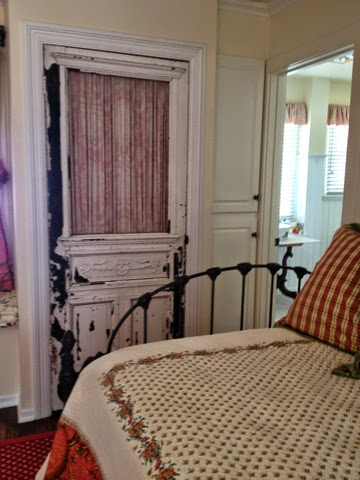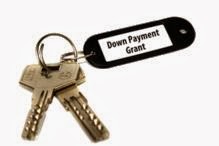Asset Documentation Facts
ASSET DOCUMENTATION FAQ
NSF’s
1) In regards to non sufficient funds NSFs and pulling money from an attached savings account - FHA HOC has stated if it has an account set up, the borrowers account pulls the OD and there are no fee's it is not considered an NSF?
a. Yes, that would be correct. Not a derogatory situation.
UTMA accounts
2) What about an account that has ITF (In Trust for)
a. That could be an acceptable account to use for transactional funds. Depends on the account owners.
3) I have used a UTMA as long as the funds were transferred to the buyers own account. Is this acceptable?
a. Not for conventional loans.
b. FHA - case by case with review by underwriting manager.
4) Going back to UTMA accounts, if the funds are transferred into the borrower’s account, can they be used.
a. Conventional programs - no
b. Government programs - case by case with management direction.
401K loans /reserves
5) Guidelines have stated in the past, if the loan is secured by a 401k if we are not obtaining this account and using it we now have to hit them with the loan is that accurate?
a. For 2100 program, yes, that is correct if the remaining balance of the asset does not support the amount of the loan against it. This is an investor overlay, not a Fannie or Freddie requirement.
6) Regarding 401K loans, we only need to hit them with the loan payment (if they don't have at least the amount of the loan amount remaining as their balance) on Conventional & Jumbo only, correct?
a. This is a Chase requirement for both conforming and non-conforming loans and is therefore an overlay to our generic programs.
7) Regarding reserves that are needed for a 30 day account, does it have to be liquid or can an IRA, 401k and/or stock account be used?
a. Any asset that would qualify as reserves.
8) Regarding 401k's as reserves, I believe we used to use 401k's if they had hardship OR loan availability, can you please clarify/confirm that we are now only allowed to use a 401k if they have hardship?
a. You can use as reserves as long as the borrower can access a hardship withdrawal or a loan, using only the amount of the maximum loan available.
9) Can we get clarification of the 401K used as reserves? We have accepted reserves that were in the form of an available loan only and used just the available loan balance, not 60% because the available loan was less. Is that not acceptable?
a. Researching revealed that is acceptable.
10) Can we get some additional clarification on the terms of withdraw. We are collecting specific to the employer’s plan.
a. Yes, that is correct.
Gifts
11) Are both owners of the Donor account required to sign the gift letter?
a. One owner is sufficient.
12) Why is a cousin not considered an acceptable donor?
a. They are not on the FHA list of relatives. They may qualify under the category of a close friend with a clearly defined and documented interest in the Borrower.
13) Regarding gift funds on FHA, the email stated if the gift funds were already deposited into the borrower bank account we were to use LP only. Not on all gifts. Can you please clarify?
a. You are correct.
14) Gift deposited on FHA using DU, it never said we had to use LP only.
16) How do we verify or determine an amount on a "large deposit" into a donor's account when we don't know their income to come up with the large deposit amount?
a. Underwriter's discretion - any deposit prior to the gift giving date if similar to the gift amount or not identifiable as donor's income/payroll.
17) Run LP for FHA loans with gift funds OR with gift funds already deposited to borrowers account?
a. For gift funds already deposited to borrower's account, please use LP.
18) On a gift letter - if the donor money comes from a joint account are we requiring that both donor's sign the gift letter?
a. One donor is sufficient.
19) Can the gift donor be a cousin?
a. No, a cousin is not considered a relative under FHA guidelines. They would have to qualify as a close friend with a clearly defined and documented interest in the Borrower.
20) Can the gift donor be a future father in law?
a. He would not fall under family. The future part makes him ineligible. But for FHA would qualify as an acceptable gift donor if they can document he is a close friend with a clearly defined and documented interest in the borrower.
21) If the donor signs a statement stating no deposits have come from another person in the transaction do they still have to source the deposits?
a. Underwriter discretion depending on the size of the deposits, etc.
22) On a gift, we have to document the donor’s ability to gift even if it is a Conventional loan?
a. No, just on FHA loans.
23) So the donor’s ability is only on FHA.
a. Yes.
24) Home in 5 gift funds do we need to run LP?
a. Recommend running LP for all FHA loans with gift funds.
25) Donor's ability is also on USDA, correct?
a. Yes, and gift cannot be used for reserves.
Large Deposits
26) LARGE DEPOSITS: How does the UW determine what can or cannot be disallowed to remain under program 2100?
a. Funds not needed for cash to close or reserves but need a borrower explanation for the deposit(s) and why it cannot be documented.
27) If there is a large deposit from an unsecured line of credit and borrower has since depleted it are we ok as is to use the recent balance?
a. If the unacceptable funds have been spent outside of our transaction requirements, then you can consider the current balance in the asset account.
28) Is large deposit considered over $100, or $500, or $1000?
a. Please consult the large deposit policy in each program matrix.
Acceptable Receipt of Documentation
29) Are bank screen shots acceptable? i.e it's not a cell phone screen, and it's not a pdf printout but it does show the url via the screen shot, is that acceptable?
a. As long as it contains all the required information, ie: account holder name, account number, and the 30 day/60 day history and covers all transaction types.
30) What if it is a 'scanned' document sent via phone.
a. OK if has URL or all required information
31) TD bank doesn't show the URL on them when we do a print out just FYI.
a. Then must obtain full bank statements
32) What happens when the running totals are not available? Not all banks have the running balance on their Transaction History.
a. Must have ending balance and all required information including URL.
33) I learned with a borrower that if the URL is not printing on the statements they print at home, have them adjust the header/footer and it will usually pop up.
34) Can you clarify if the transaction history alone (as long as it contains all necessary info) is sufficient, or if we need to also have an actual bank statement with the transaction history?
a. You have to have a statement to use with the transaction history as usually the transaction history does not show the full account number/bank information/borrowers full name or joint names. If you are using the transaction history it needs to have all that information and I would get it stamped by the bank to show it as certified….
35) What types of images should Borrowers not download?
HTML doesn't flow, cell phone pictures are blurry, GIF doesn't save
36) Are Cell Phone images acceptable?
a. If Government / Conventional (non bond) – we accept any clear & complete copy of the document.
b. If it is Bond / Jumbo – we cannot accept documents from a cell image at this time.
Destiny Input
37) For the bank address, use the local branch address or the bank address on the statement?
a. Either is fine.
38) Certain jumbo investors require asset addresses on the 1003.
a. Asset addresses are required for all loans.
39) Is this Max Cash to Close, a pre-existing condition or are we to free hand this?
a. It is a default condition that you can change
40) Are you allowed to use last 4 digits of acct numbers?
a. No, please use the full account number.
41) Regarding the address that we use on the bank statement - do we use what is on the statements or the physical address they bank at locally?
a. Either is fine.
Secured Borrowed Funds
42) Do we need to add the address of the 401k company under the secured borrowed funds?
a. Yes, so QC can re-verify.
43) Can we get clarification on the amount we are using to determine if we hit the borrower with a payment for secured borrowed funds? Specifically, do we take the remaining balance multiplied by 60% then subtract the loan amount?
a. Value or balance of the account must be sufficient to repay the loan obligation. When the account balance is less than the loan balance, transaction requires payment to be included in DTI calculation. (ch)(No reduction % required).
Miscellaneous
44) What's an mri?
a. Minimum Required Investment.
45) Are there any situations where we can use a VOD in place of a bank statement if the borrower is unable to provide?
a. Conventional agency programs. Check the product matrices for specific investor programs.
46) If stamped statement from the bank....does every page have to be stamped?
a. Yes please.
47) If an Ex paid a debt off for the Buyer and they are not on good terms with the Buyer any longer and will not provide the source of paying the debt off, what is the next option?
a. Debt payoff can only come from a gift from a relative. Ex-spouse is not a relative. Payoff would be considered a concession or contribution to our transaction by an unacceptable source and the amount would be deducted from acquisition before determining the "lendable" mortgage amount.
And some images by my son Carson since you read all this
mortgage information this far down as eye assets:
Keep working C G :)








.jpg)













